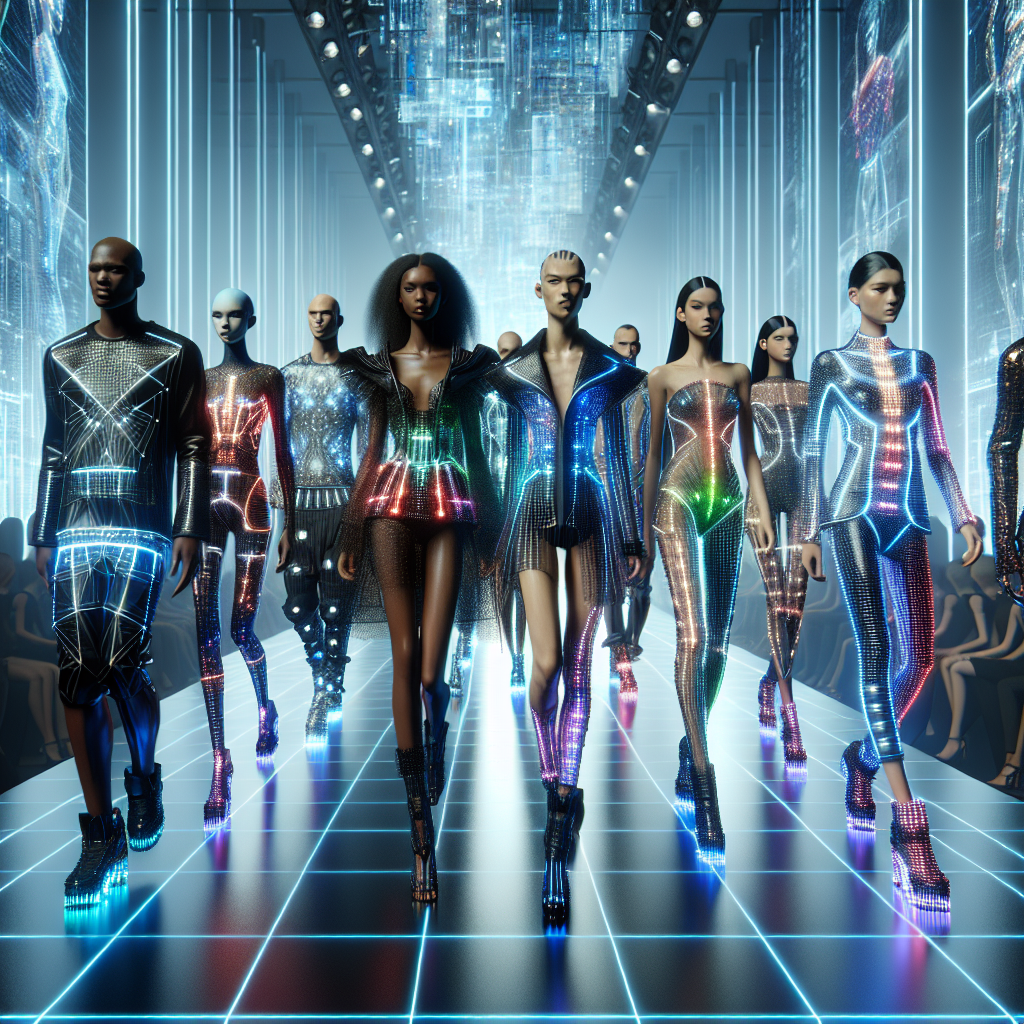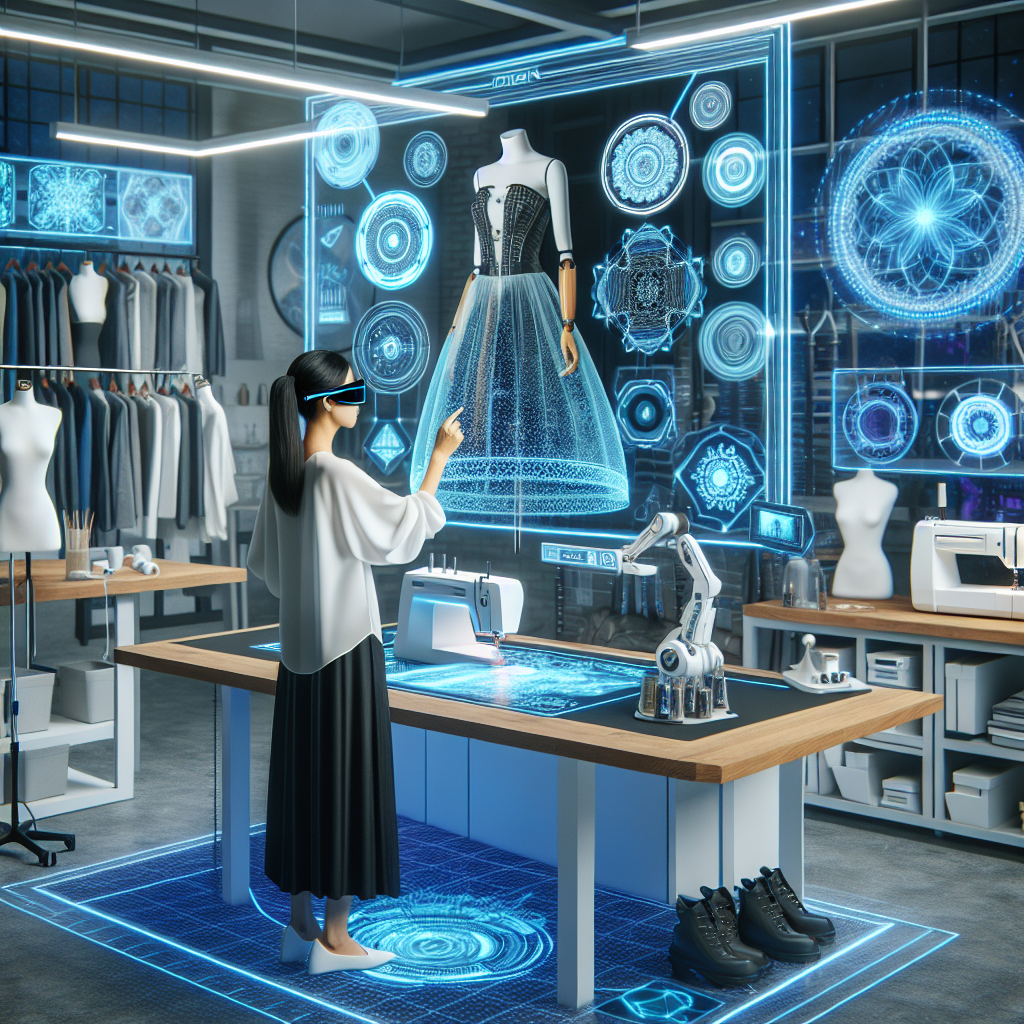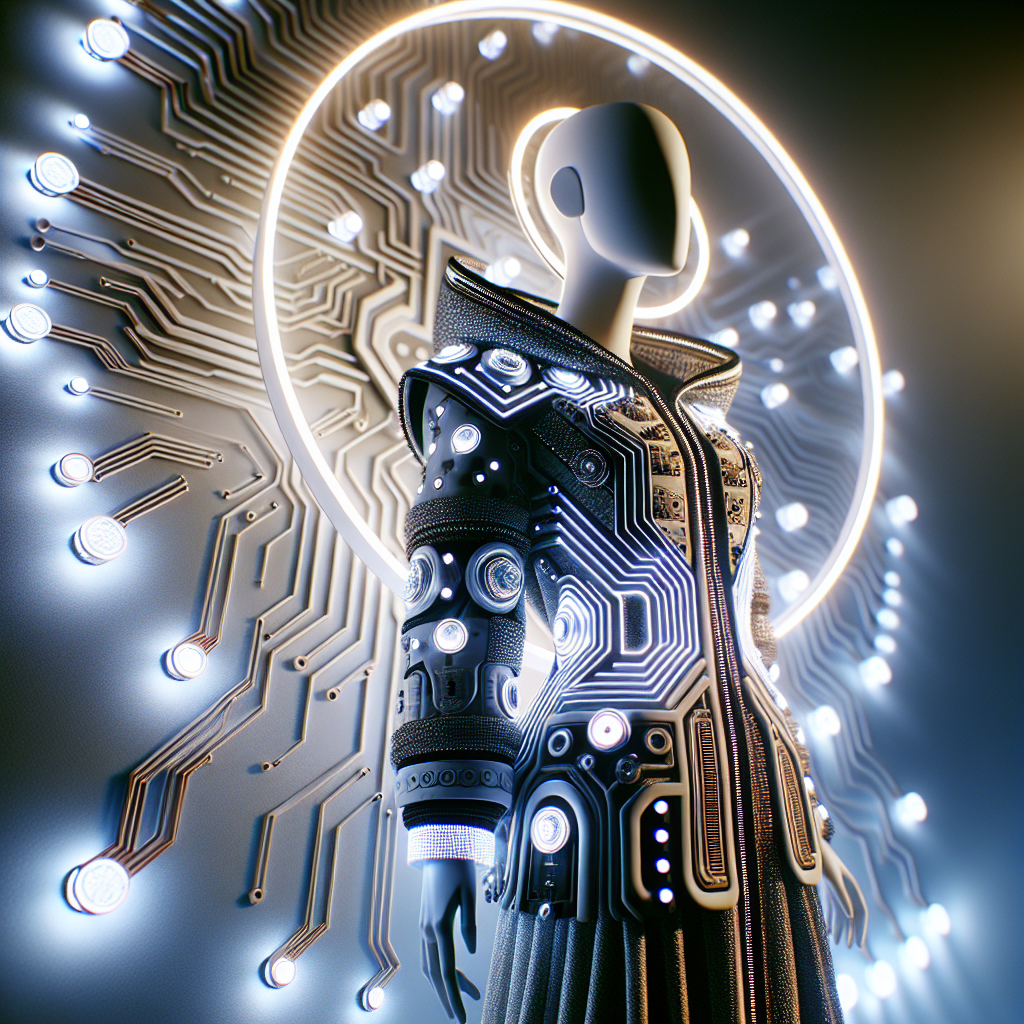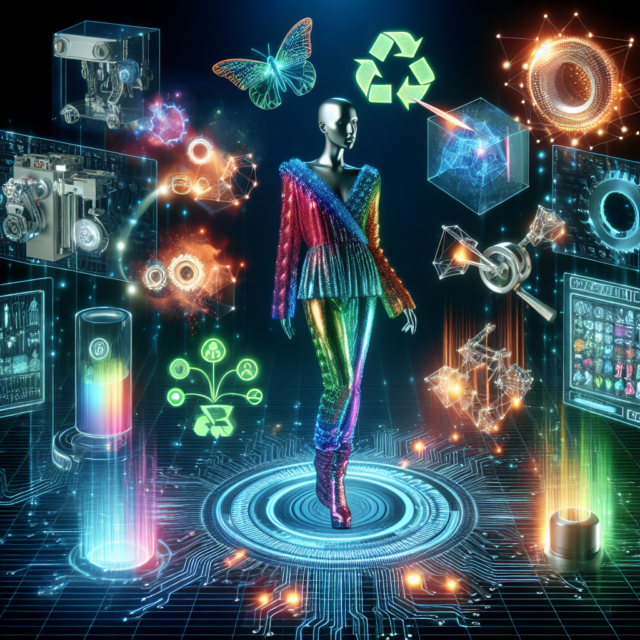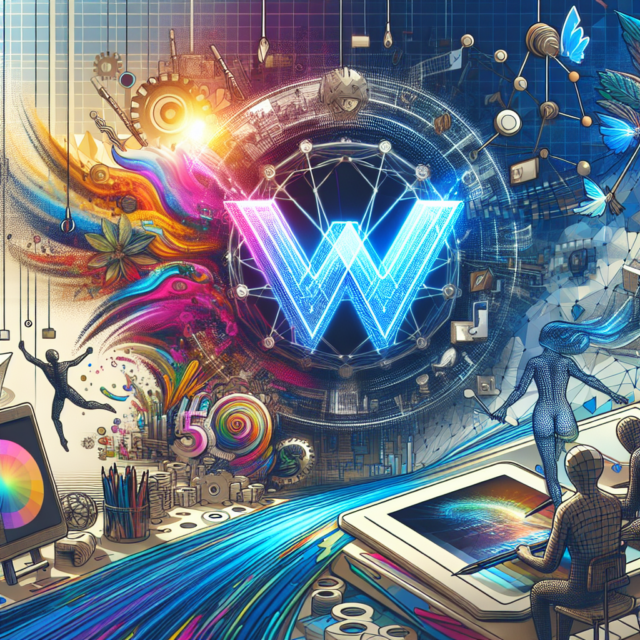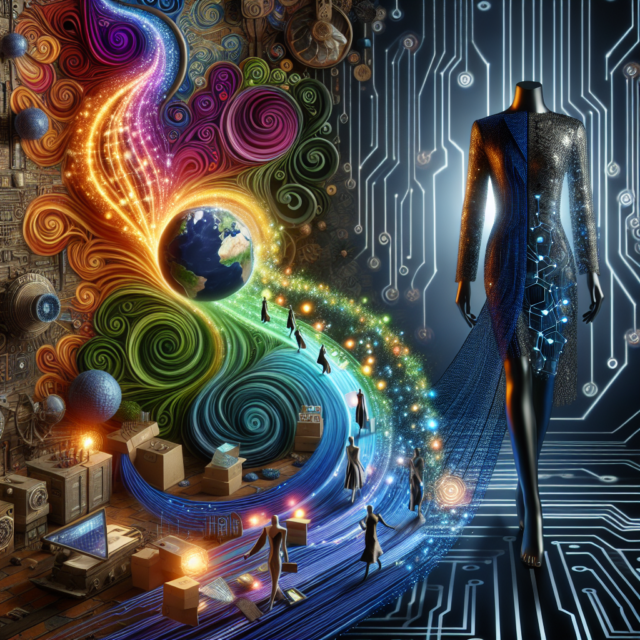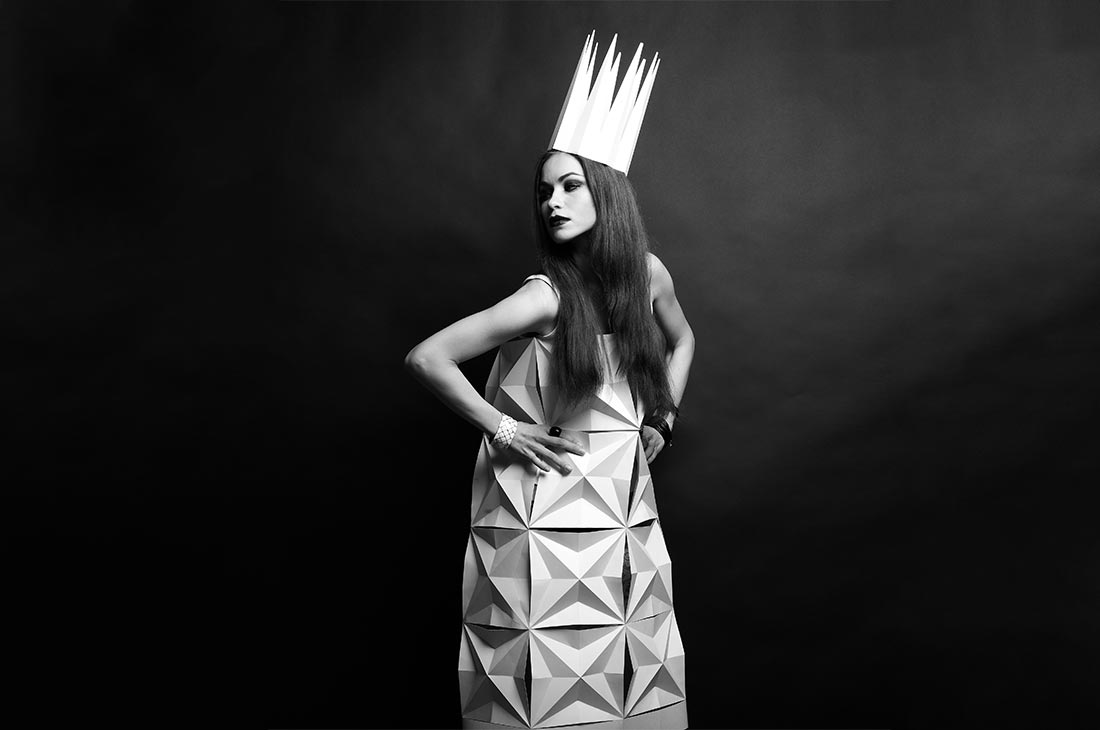Exploring Emerging Trends in the World of Digital Fashion
In recent years, the fashion industry has witnessed a transformative shift driven by technological advancements, leading to the emergence of digital fashion. This burgeoning field is not just reshaping how consumers interact with apparel but also redefining the very essence of fashion creation and consumption. As virtual fashion platforms become more sophisticated, artificial intelligence plays a pivotal role in design and personalization, and sustainability emerges as a core principle, digital fashion is poised to revolutionize the industry. This article delves into these emerging trends, exploring how they are shaping the future of fashion.
Unveiling the Rise of Virtual Fashion Platforms
Virtual fashion platforms have become a cornerstone in the digital fashion landscape, offering consumers and designers a new realm of possibilities. These platforms enable users to try on clothes virtually, eliminating the need for physical fitting rooms and allowing for a seamless shopping experience from the comfort of one’s home. With advanced 3D modeling and augmented reality (AR) technologies, consumers can visualize how garments will look and fit on their bodies, enhancing their confidence in online purchases.
The appeal of virtual fashion platforms extends beyond convenience. They also provide a creative playground for designers to experiment with avant-garde concepts without the constraints of physical materials. Designers can push the boundaries of traditional fashion, crafting pieces that defy the laws of physics and exploring new aesthetics that might not be feasible in the physical world. This opens up a world of limitless creativity and innovation.
Moreover, virtual fashion platforms democratize fashion by making it more accessible to a global audience. Designers from different parts of the world can showcase their work to an international audience without the need for a physical presence in major fashion capitals. This inclusivity fosters cultural exchange and broadens the diversity of fashion expressions available to consumers.
The rise of virtual fashion platforms is also changing the dynamics of fashion shows and events. Traditional runway shows are being complemented or replaced by digital presentations, where audiences can experience collections in immersive virtual environments. This shift not only reduces the carbon footprint associated with large-scale events but also makes fashion shows accessible to a wider audience, including those who might not have been able to attend in person.
As technology continues to evolve, virtual fashion platforms are likely to become even more sophisticated, offering enhanced interactivity and personalization. The integration of blockchain technology is also on the horizon, promising to provide transparency and authenticity in digital fashion transactions. This could lead to new business models where consumers can buy, sell, and trade virtual garments in secure and trustworthy environments.
In summary, virtual fashion platforms are at the forefront of the digital fashion revolution, offering innovative solutions that enhance the shopping experience, empower designers, and democratize access to fashion. As these platforms continue to evolve, they hold the potential to fundamentally transform how fashion is created, consumed, and experienced.
The Role of AI in Revolutionizing Digital Apparel
Artificial intelligence (AI) is playing an increasingly critical role in the evolution of digital apparel, offering tools and capabilities that were unimaginable just a few years ago. AI-driven design software allows designers to create garments with unparalleled precision and efficiency, automating repetitive tasks and freeing up creative resources for more innovative endeavors. By analyzing vast datasets, AI can identify emerging trends and consumer preferences, enabling designers to tailor their creations to meet market demands.
One of the most significant contributions of AI to digital fashion is its ability to personalize the shopping experience. AI algorithms can analyze individual consumer data, such as past purchases and browsing behavior, to recommend styles and fits that align with personal tastes. This level of personalization not only enhances customer satisfaction but also increases the likelihood of purchase, driving sales for brands and retailers.
AI is also revolutionizing the way digital apparel is marketed and sold. Virtual stylists powered by AI can provide fashion advice and styling tips, helping consumers make informed decisions. Additionally, AI-driven chatbots and virtual assistants offer 24/7 customer support, answering queries and providing assistance throughout the shopping journey. This seamless integration of AI into the retail experience is transforming how consumers interact with fashion brands.
In the realm of design, AI is pushing the boundaries of creativity by generating new patterns and styles that may not have been conceived by human designers. Through machine learning algorithms, AI can analyze existing fashion designs and create unique variations, offering designers a source of inspiration and innovation. This collaborative approach between human creativity and machine intelligence is paving the way for a new era of digital fashion design.
Furthermore, AI is enhancing the sustainability of digital apparel by optimizing supply chains and reducing waste. Predictive analytics can forecast demand with greater accuracy, allowing brands to produce the right amount of stock and minimize overproduction. This not only reduces environmental impact but also improves profitability by aligning production with consumer demand.
In conclusion, AI is a transformative force in the digital fashion industry, offering tools that enhance creativity, personalization, and sustainability. As AI technologies continue to advance, their integration into digital apparel is expected to deepen, driving further innovations and redefining the fashion landscape.
Sustainability as a Driving Force in Digital Fashion
Sustainability has emerged as a crucial driving force in the digital fashion industry, as brands and consumers alike become increasingly aware of the environmental impact of traditional fashion practices. Digital fashion offers a more sustainable alternative, reducing the need for physical resources and minimizing waste. By creating and wearing virtual garments, consumers can express their style without contributing to the pollution associated with textile production and disposal.
One of the key sustainability benefits of digital fashion is its ability to eliminate overproduction. Traditional fashion relies on producing large quantities of garments, many of which go unsold and end up in landfills. In contrast, digital fashion allows for on-demand production, where virtual garments are created only when purchased. This model not only reduces waste but also conserves resources and energy, making it a more environmentally friendly option.
Digital fashion also contributes to sustainability by promoting a circular economy. Virtual garments can be easily shared, rented, or resold, extending their lifecycle and reducing the need for new production. This shift towards a circular model encourages consumers to rethink their relationship with fashion, prioritizing quality and longevity over fast fashion trends.
Moreover, digital fashion can serve as a catalyst for sustainable innovation in the physical fashion industry. By experimenting with virtual designs, brands can test new materials and techniques before committing to physical production. This reduces the risk of unsustainable practices and encourages the adoption of eco-friendly materials and processes.
Educating consumers about sustainability is another important aspect of digital fashion. Virtual platforms can raise awareness about the environmental impact of fashion and promote sustainable choices through interactive content and engaging experiences. By fostering a deeper understanding of sustainability issues, digital fashion empowers consumers to make more informed decisions and advocate for positive change.
In summary, sustainability is at the heart of the digital fashion movement, offering a more eco-conscious approach to style and consumption. As the industry continues to evolve, integrating sustainable practices and technologies will be essential in shaping a more responsible and resilient fashion future.
The world of digital fashion is rapidly evolving, driven by the convergence of technology, creativity, and sustainability. Virtual fashion platforms, artificial intelligence, and a commitment to sustainability are not only transforming how we experience fashion but also redefining the industry’s core values. As these emerging trends continue to develop, they hold the potential to create a more inclusive, innovative, and environmentally conscious fashion landscape. Embracing digital fashion is not just about adopting new technologies; it’s about reimagining the future of fashion in a way that benefits both consumers and the planet.


